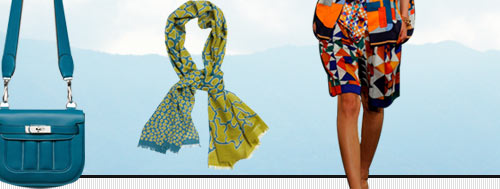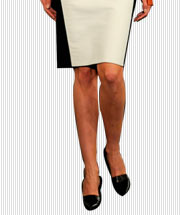





1837
In 1837, Thierry Hermès (1801-1878) set up a harness and saddlery workshop in Paris in the Grands Boulevards quarter, which at the time rang to the sound of horses’ hooves.
1867
At the 1867 Exposition Universelle, the jury awarded Hermès the First Class Medal.
1880
The founder's son, Charles-Émile Hermès (1831-1916) took the business over: In 1880, he set up a store and workshops at Saint- Honoré, near the Palais de l’Élysée. Soon assisted by his two sons, Adolphe and Émile-Maurice, he built up an elite, cosmopolitan clientele in Europe, North Africa, Russia, America and even Asia.
1902
In 1902, under the name of Hermès Frères (1902-1919), the company was then managed by the third generation. The Haut à courroies bag was designed by Émile Hermès devised to allow riders to transport their saddles. The brand worked for European royalty, as well as the courts of Annam, Tonkin, Siam, Japan, and the republics of Argentina, Brazil, Ecuador, Mexico and Chile, among others.
1914
In 1914, Adolphe and his younger brother Émile-Maurice were employed around 70 to 80 saddle-makers.
1920s
Émile-Maurice Hermès (1871-1951) remained, throughout the 1920s, the sole director of a business. He extended the Hermès label to include "saddlestitched" leather goods, thereby adding bags, luggage, travel, sport and driving accessories, as well as clothing, silk scarves, belts, gloves, jewellery and wristwatches to the traditional product offer. In the early 1920s, Hermès became a fashion designer.
1924
In 1924, the hatter Dobbs became the exclusive representative of a broad range of Hermès creations in New York.
1930
The first independent store in America opened in 1930. However, weakened by the Great Depression, Hermès was forced to close it at the end of 1931.
1930s
During the 1930s, the House launched several items whose timeless simplicity earned them a place among the great Hermès classics: the handbag known later as the Kelly, leather diaries (1930), a line of desk accessories, the Sac à dépêches (1928), the Chaîne d’ancre bracelet (1938), each created by Robert Dumas.
1937
Silk, which until then had been used for making jockeys’ colours, inspired the idea of the printed scarf, which was inaugurated by Hermès in 1937.
1947-1951
Robert Dumas took over from his father-in-law Émile Hermès, who died in 1951. He worked closely with his brother-in-law Jean-René Guerrand, who expanded perfumery and haute couture. In 1947, Hermès created the limited liability company (SARL) Comptoir nouveau de la parfumerie (CNP). Between 1947 and 1951 were born the fragrances H, Doblis, L'Eau de Doblis and Eau d’Hermès, created for both monsieur and madame. The company launched the idea of an exclusive tie in 1949 on the initiative of the director of the Cannes branch. Adorned with its distinctive logo - "the Duc carriage with horse" - and its "orange box," the brand continued to diversify.
1954
Hermès presented its first silk twill tie model in 1954.
1956
Around 1956, the ladies’ handbag envisioned by Robert Dumas in the early 1930s, was renamed Kelly.
1950s
In the late 1950s, India was the inspiration for the name of a Hermès women’s coat, Calcutta, and the Caparaçons de la France et de l'Inde silk scarf (Philippe Ledoux design) paid dual homage to the sumptuous attire created for both horse and elephant.
1965
Beginning in 1965, Patrick Guerrand and Henri d'Origny explored new horizons in Hermès' designs for men with the Hermès Sport label. The new ready-to-wear department offered bold interpretations of the Hermès house codes.
1967
In 1967, Hermès presented the first women’s ready-to-wear collection designed by Catherine de Karolyi. The 1960s and 1970s saw new stores opened in Europe, in Asia, and in the United States.
1978
Jean-Louis Dumas, born in 1938, represented the fifth generation of the family as he took up the reins in 1978.
1984
The brand came up with the famous Birkin bag in 1984 - and ready-to-wear, and introduced new crafts to the House. It also created the watch making subsidiary La Montre Hermès SA, based in Biel, Switzerland, then launched enamel and porcelain and purchased bootmaker John Lobb, crystal-maker Saint-Louis and silversmith Puiforcat.
1987
In 1987, Hermès celebrated its 150th birthday, affirming its unique identity as a company founded on the values of dedication to excellence.
1992
In 1992, the production workshops and design offices were relocated to new spaces just outside Paris.
1995
In 1995, ten craftsmen from the John Lobb, Saint-Louis, Puiforcat, and Hermès houses travelled to meet nomadic craftsmen in the Thar Desert in the heart of Rajasthan. These artistic exchanges, guided by a common language of precise, measured techniques, strengthened the already long-existing ties woven with India, whose thousand facets offer just as many sources of enchantment.
2000
Hermès "Maison" opened on Madison Avenue in New York in September 2000. In October 2000, in London, a few days before Diwali, the Hermès Sloane Street store presented a new collection of organdie saris with matching cholis in shot silk, created upon the initiative of Pierre-Alexis Dumas and Sunita Kumar.
2001
In June 2001, Japan saw a new "Maison Hermès" opening in Tokyo, created by Renzo Piano.
2006
In March 2006, after being a part of Hermès management for twenty-eight years, Jean-Louis Dumas stepped down from his duties. He was replaced by Hermès International manager Patrick Thomas. While new stores were flourishing in Southeast Asia, China, Latin America, Oceania, and the Middle East, the Seoul district of Dosan in Korea saw the opening of a new "Maison Hermès" in November 2006.
2009
Dumas' son, Pierre-Alexis, took on joint artistic management with his cousin, Pascale Mussard, and then, in February 2009, was named Hermès general artistic director.
Hermès today
Today, the company employs more than 8,050 people worldwide. In 2009, Hermès saw a sales turnover of 1,914 million Euros, distributed evenly between the American, Asian, and European regions. 73% of Hermès International’s capital is held by the family.